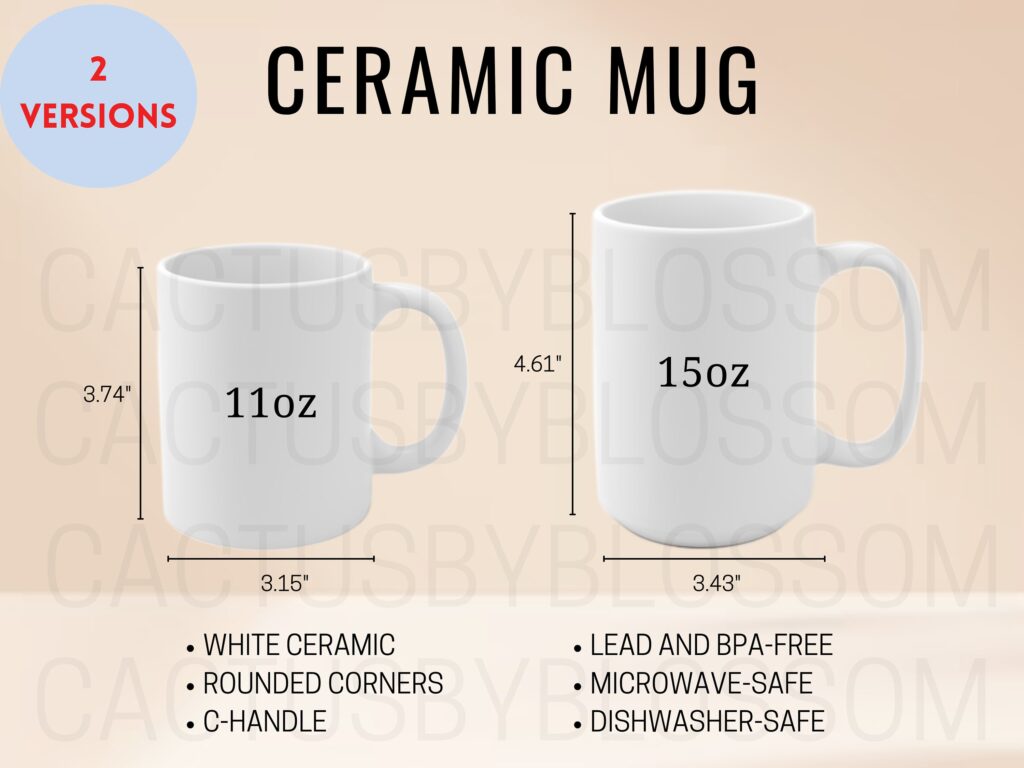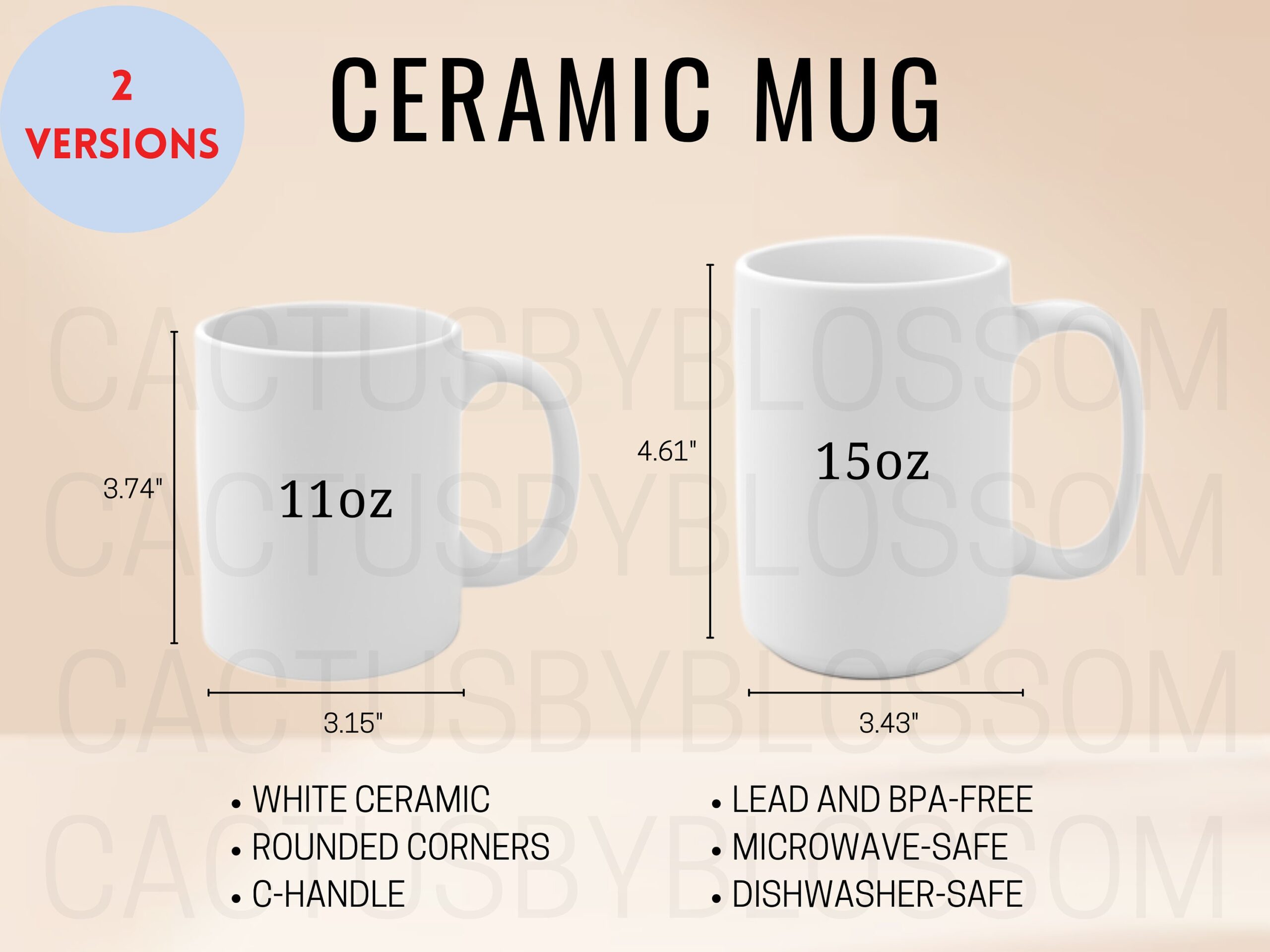
Decoding the Coffee Mug: How Many Ounces Does Yours Hold?
For many, the morning ritual begins with the comforting embrace of a warm coffee mug. That first sip, the aroma of freshly brewed beans – it’s a small moment of bliss. But have you ever stopped to consider the capacity of your trusty mug? Specifically, the question we’ll be tackling today: how many ounces in a coffee mug? It’s a deceptively simple question with a surprisingly nuanced answer, one that affects everything from your caffeine intake to your overall hydration.
The humble coffee mug is a staple in homes and offices worldwide. It’s a vessel, a statement, and often, a cherished companion. But its capacity is not standardized. Unlike a measuring cup or a pint glass, coffee mugs come in a dizzying array of shapes, sizes, and, crucially, ounce capacities. Understanding the volume your mug holds is more important than you might think. Whether you’re carefully measuring your morning coffee, tracking your fluid intake, or simply trying to figure out how much creamer to add, knowing the answer to “how many ounces in a coffee mug” is essential.
The Standard: What’s Considered a ‘Typical’ Coffee Mug?
There’s no single, universally accepted standard for a coffee mug’s size. However, a ‘typical’ or ‘standard’ coffee mug usually holds between 8 and 12 fluid ounces. This range is a good starting point, but it’s far from definitive. You’ll find mugs that are smaller, designed for espresso or smaller portions, and mugs that are significantly larger, catering to those who prefer a generous serving of coffee or tea. Therefore, assuming the answer to how many ounces in a coffee mug is a static number is where the confusion begins.
The 8-12 ounce range is a common size because it strikes a balance between portability, ease of use, and the amount of liquid most people consume in a single sitting. It’s a size that fits comfortably in most car cup holders and is manageable to hold, even when filled with hot liquid. However, this is just a general guideline, and the actual capacity can vary greatly.
Factors Influencing Mug Capacity
Several factors contribute to the wide variation in coffee mug sizes. Understanding these factors can help you estimate the capacity of your own mug:
- Shape and Design: The shape of the mug plays a significant role. A wider, shallower mug might hold less liquid than a taller, narrower one, even if they appear to be the same ‘size.’ Designs with flared rims or intricate details can also affect the overall capacity.
- Material: The material of the mug (ceramic, glass, stainless steel, etc.) itself doesn’t directly impact the ounce capacity, but it can influence the design and therefore the size. For example, a double-walled stainless steel mug might have thicker walls, potentially reducing its internal capacity compared to a thinner ceramic mug of the same external dimensions.
- Intended Use: Mugs are designed for different purposes. A small espresso cup will naturally hold fewer ounces than a large travel mug. Similarly, a mug designed for latte art might have a specific shape to accommodate the milk foam.
- Manufacturer and Brand: Different manufacturers have different standards and design preferences. A mug from one brand might hold a different amount of liquid than a mug from another brand, even if they have a similar appearance.
To truly know the answer to how many ounces in a coffee mug, you need to assess each mug individually, considering its shape, design, and intended use.
How to Determine Your Mug’s Capacity
Fortunately, determining the capacity of your coffee mug is a straightforward process. Here’s a step-by-step guide:
- Gather Your Supplies: You’ll need a measuring cup or a liquid measuring device (like a measuring jug) with ounce markings. You might also want a pen and paper to record your findings.
- Fill and Measure: Carefully fill your mug with water, using the measuring cup to add the water in small increments. Pay close attention to the fill line. For most mugs, the fill line is just below the rim.
- Record the Result: Once the mug is full (or at the level you usually fill it), note the total number of ounces the mug holds. Write this number down.
- Repeat for Multiple Mugs: If you have several mugs, repeat the process for each one. You’ll likely find that the capacities vary.
This simple method will give you an accurate understanding of how many ounces in a coffee mug you regularly use. It’s a small investment of time that can significantly improve your coffee-drinking experience and help you stay accurately hydrated.
Beyond the Basics: Why Ounce Capacity Matters
Knowing the answer to how many ounces in a coffee mug is more than just a matter of curiosity. It has practical implications in several areas:
- Precise Coffee Brewing: If you’re a coffee aficionado, you know that the ratio of coffee grounds to water is crucial for a perfect brew. Knowing the mug’s capacity allows you to accurately measure the amount of water you’re using, which in turn helps you achieve the desired coffee strength and flavor.
- Caffeine Intake Tracking: Caffeine content varies depending on the coffee-to-water ratio and the type of coffee. Knowing the volume of your mug helps you estimate your caffeine intake, allowing you to manage your consumption and avoid unwanted side effects.
- Hydration Monitoring: Staying hydrated is essential for overall health. If you’re using your mug for water or other beverages, knowing its capacity allows you to track your fluid intake throughout the day. This is especially important for athletes or people with health conditions.
- Recipe Adjustments: Many recipes, especially those for coffee drinks like lattes or cappuccinos, specify liquid volumes. Knowing your mug’s capacity allows you to scale recipes and make adjustments to suit your preferences.
In essence, understanding how many ounces in a coffee mug empowers you to control your coffee consumption, monitor your hydration, and make informed decisions about your beverage choices.
The Evolution of the Coffee Mug
The coffee mug, as we know it, has a rich history. While the exact origins are difficult to pinpoint, the concept of a personal drinking vessel has existed for centuries. Early forms of mugs were often made from wood, clay, or metal. The development of ceramic materials and mass-production techniques in the 18th and 19th centuries led to the widespread availability of affordable and durable mugs. The evolution of the coffee mug reflects changing tastes and cultural preferences, with designs ranging from simple, functional vessels to elaborate works of art.
Today, the coffee mug is a ubiquitous object, found in homes, offices, and cafes around the world. It’s a canvas for self-expression, a source of comfort, and a daily companion for millions. Knowing the answer to how many ounces in a coffee mug is simply a part of understanding and appreciating this essential item.
Specialty Mugs and Their Capacities
Beyond the standard mug, there are various specialty mugs designed for specific purposes:
- Travel Mugs: Designed for portability, travel mugs typically have a larger capacity, often ranging from 12 to 20 ounces or more. They are usually insulated to keep beverages hot or cold for extended periods.
- Espresso Cups: These small cups are designed for single or double shots of espresso, typically holding between 2 and 4 ounces.
- Latte Mugs: Often wider and shallower than standard mugs, latte mugs are designed to accommodate the milk foam and create visually appealing latte art. Their capacity usually falls within the 8-12 ounce range.
- French Press Mugs: Some French press coffee makers are integrated into a mug design. These mugs often have a larger capacity, around 12-16 ounces, to accommodate the coffee brewing process.
The specific capacity of these specialty mugs varies, so it’s important to check the manufacturer’s specifications or measure the capacity yourself to determine exactly how many ounces in a coffee mug you are using.
Conclusion: Embracing the Mug’s Mystery
So, the definitive answer to how many ounces in a coffee mug? It depends! While a ‘typical’ mug might hold 8-12 ounces, the reality is that mug sizes vary widely. The best way to know the capacity of your mug is to measure it. This simple act can enhance your coffee experience, help you track your hydration, and provide a deeper appreciation for the humble coffee mug.
The next time you reach for your favorite mug, take a moment to appreciate its unique characteristics and its role in your daily routine. Understanding its capacity is just one more way to enjoy the simple pleasures of life, one delicious sip at a time. Knowing the answer to how many ounces in a coffee mug is just the beginning of a deeper understanding of your coffee rituals.
[See also: How to Choose the Right Coffee Beans, The Ultimate Guide to Coffee Brewing Methods, Coffee and Health: What You Need to Know]


